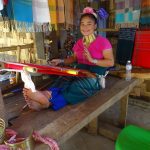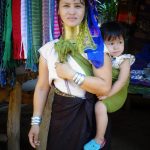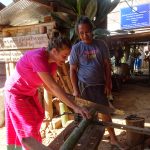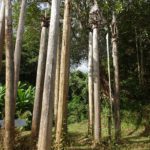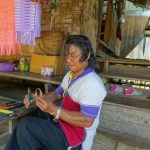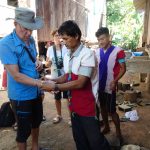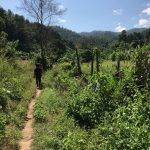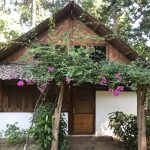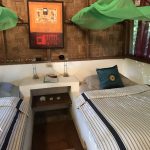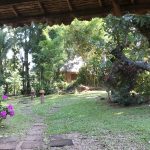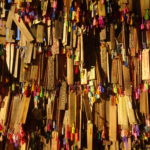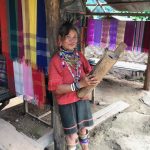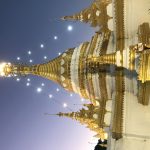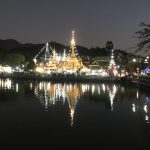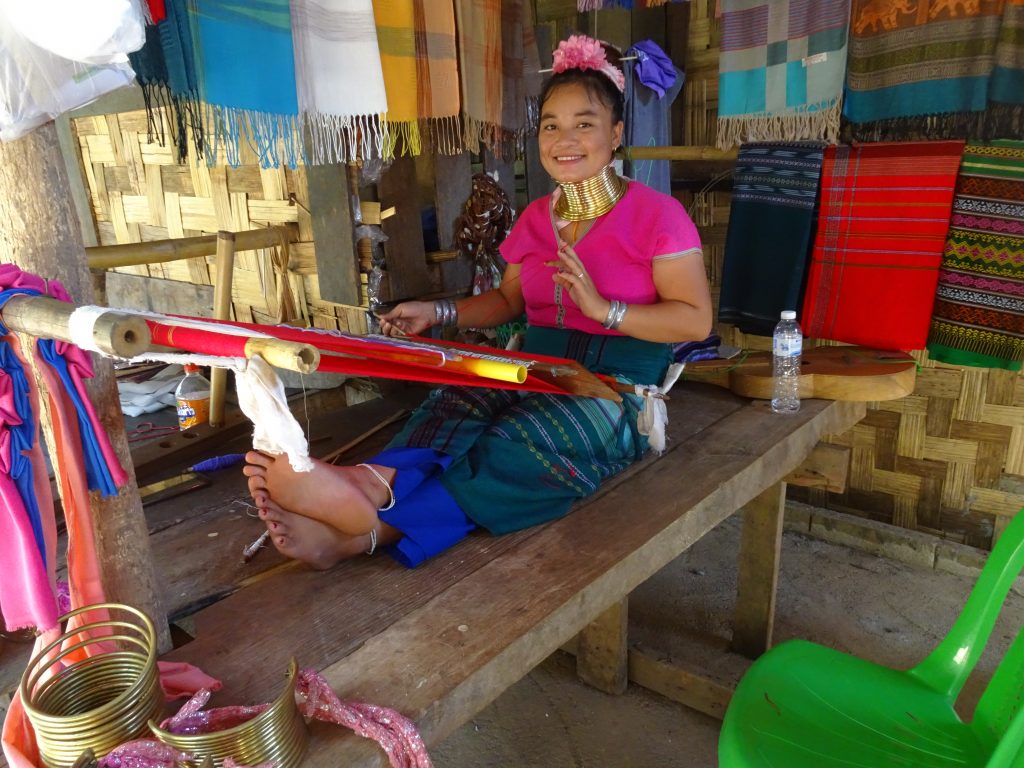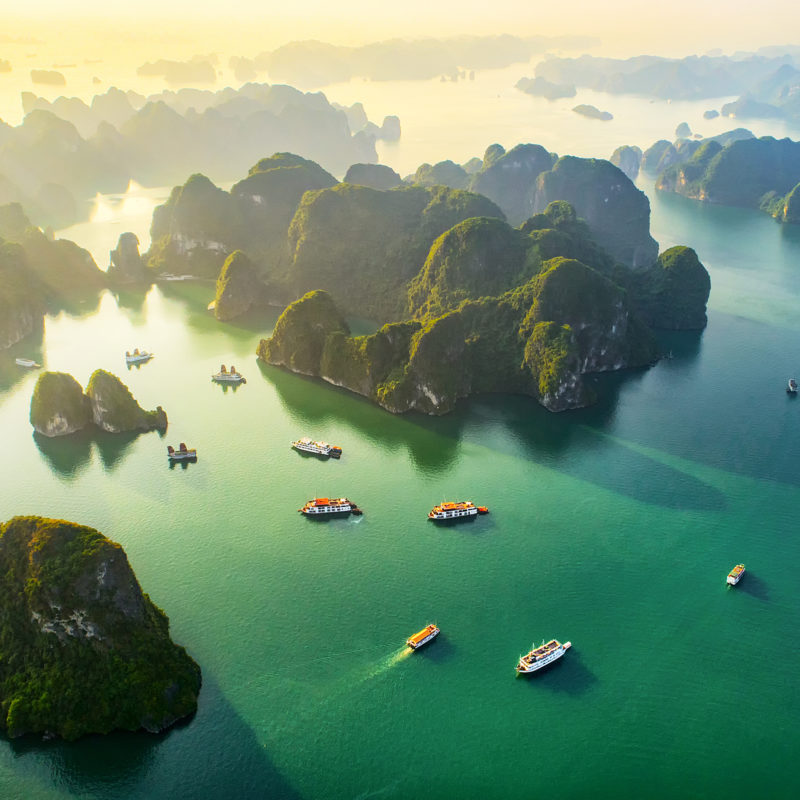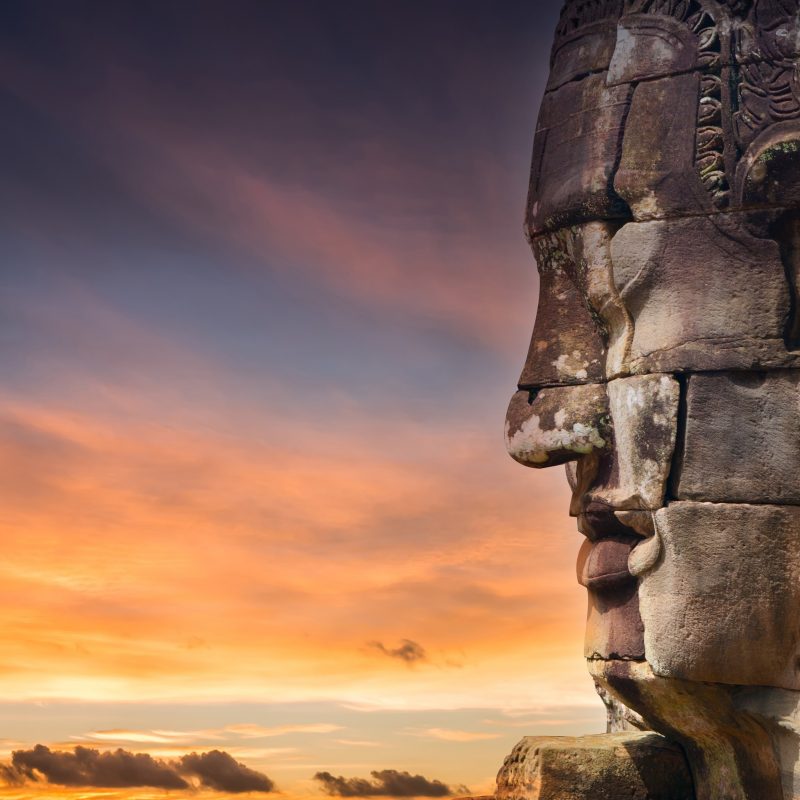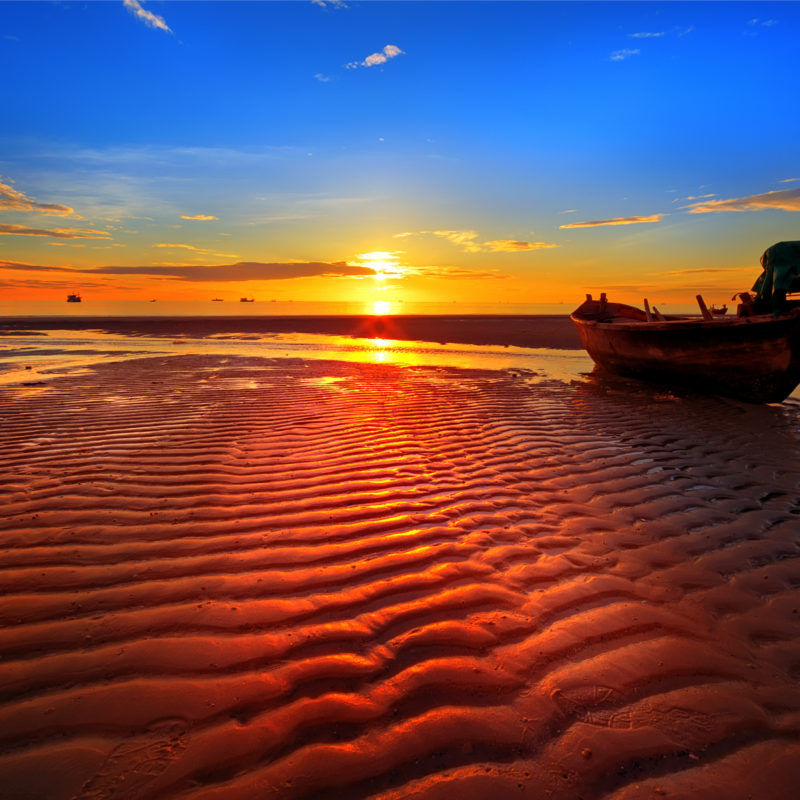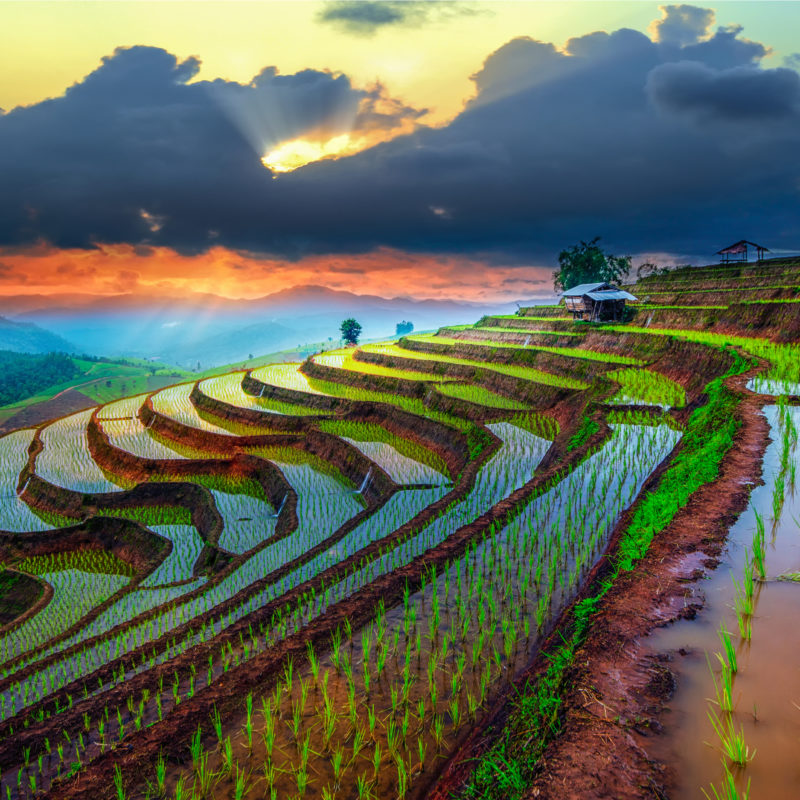Huay Pu Keng – the small, beautiful village situated in the province of Mae Hong Son, in the Northwest of Thailand, holds many unknown, surprising features to discover and experience. The surrounding nature with its picturesque landscapes takes your breath away, and the thick green jungle isolates the village that is situated directly at the Pai river. Once you cross the river with a boat, you are at this magical place that is home to the Karenni people (Kayan, Kayaw, Red Karen and Pakayor subgroups). Furthermore, Tai Yai (Shan, an ethnic minority from Northern Thailand) also live in Huay Pu Keng.
If you ever heard of and wanted to visit the Kayan “long neck” people, but never did because it felt too touristy, Huay Pu Keng in Mae Hong Son is your place to go. Are you looking for unique, meaningful encounters with individuals that have stories to tell that you never heard of, traditions to share that you never experienced, and skills to teach you that you never imagined learning? The inhabitants of Huay Pu Keng are more than happy to let you become part of that and more during your visit.
Many people in the world have this picture in their head of the Kayan women wearing brass neck rings, but nobody really knows their stories. Together with other Karenni subgroups (many of them fled from Myanmar because of the civil war), they have so many interesting stories to tell and valuable skills to share with visitors! Huay Pu Keng is the first and only Kayan village in Thailand that made the transition from show village towards community-based tourism (CBT), so that tourism can empower them! And you can be one of the first visitors to experience their culture, stories and activities in a meaningful way. Go off the beaten track with Kayan guides Aye Muang and Pay Yu and visit unexplored places in the village. Wander out of the village to immerse yourself in the peaceful and beautiful lush natural surroundings. And don’t get confused: Huay Pu Keng is often referred to Baan Nam Piang Din by Thai’s, which is actually the name of a nearby village, with Ban or Baan being the word for village.
Since the province of Mae Hong Son, and especially Huay Pu Keng in particular, receive a very low number of tourists, you will have the feeling that it is low season all year round!
Why Huay Pu Keng is perfect for low season travel?
Northern Thailand is known for its milder weather with colder temperatures, so it is very common to travel there in the dry season. That means that climate-wise, November until February is the most popular time to visit the area Huay Pu Keng is situated in: the daytime temperatures are comfortable with mostly sunshine, and the evenings become a bit cooler.
From March until May, the hot and dry season can be distinguished with very dry and smoky air, which results mostly from the annual agricultural and forest fires. With very high temperatures during day and night, many visitors avoid travelling during this almost unbearable weather. It is followed by the rainy season, which cools down the temperatures during the months of June until October. This period of time is generally avoided due to monsoon season, where strong showers can be expected several times every day and night. They are brief and don’t last the whole day, and especially in Mae Hong Son, where Huay Pu Keng is situated, those rain showers are less strong and frequent.
Huay Pu Keng is wonderful during these months
As Huay Pu Keng is surrounded by beautiful untouched flora and fauna, the rainy season makes this environment even more spectacular with the lush, vibrant green jungle flourishing everywhere you look. Colors seem brighter, the air feels fresher and the climate up in the northern parts of Thailand, and especially in elevated areas, is more comfortable than elsewhere in the country.
Moreover, the farming season is mostly during the rainy months. During that time you can join the villagers to plant or harvest black sesame. Also, you can help them to pick edible mushrooms and bamboo shoots and learn about leaf roofs and how they make them. Do you want to try edible insects? They put wet flour on a stick to attract them – you are more than welcome to join them! Huay Pu Keng is open for tourists to visit all year round, so why not pay them a visit and learn how they make use of this very fertile time of the year?
How accessible is the region?
The roads are well accessible all year round. Only in the rainy season, roads may become inaccessible. Fortunately, this happens very rarely. Huay Pu Keng is a scenic 40 minute car or motorbike ride through the hilly jungle from Mae Hong Son town. To visit the village, the most common and popular way is to cross the Pai River where the villagers will pick you up by one of their wooden boats.
Immerse yourself in authentic culture and festivals
The most important religious Karenni festival of the year, also celebrated in Huay Pu Keng, is called Kay Htoe Boe. It is the new year festival held every year around April on an auspicious date. Some days before the ceremony, the village shaman goes to the nearby forest to choose a suitable tree, and chicken bones divination helps to confirm or reject the choice. The fortune-telling includes a foretelling of the village’s fate in the upcoming year and asks for advice on matters of importance for the village and its people. They transform the chosen tree into a decorated totem pole during this spectacular three-day festival, held to encourage favourable weather, prosperous harvest, peace and good health. The totem pole is placed at the sacred site in the village, accompanied by traditional dancing and singing along the sound of gongs and flutes. The traditions also include competitions in sports, for example, traditional dancing is performed underneath the Kay Htoe Boe, the totem pole, as well as praying and the drinking of self-made brews. You are very welcome to join this amazing festival, where you can gain a unique perspective of the religious traditions, culture, foods and drinks of the people of Huay Pu Keng!
Experiences you must try
Participate in one or more of the multiple community-based workshops offered by the Kayan, including making a cup, bottle or bell from bamboo, weaving your own headband, carving a Kayan figure or boat from wood, or making a bracelet from recycled neck rings. There are much more activities that can be pursued all year round as you can see in their CBT leaflet, and that provide you with a truly enriching experience. You won’t “just” bring home the incredible stories and discoveries you made during this time, but also your self-made jewellery, cup or piece of fabric! Now, that is a unique authentic souvenir with many memories attached, isn’t it?
Stay with the villagers in their homestay, for one or more nights, which will give you a one-of-a-kind adventure. During this time, you can dive even deeper into the background of the Karenni people – what are their beliefs, what do they value, what are their hopes and wishes for their future? This is where an encounter becomes unforgettable and both you and your counterpart feel empowered and culturally enriched – it’s truly about an exchange that includes both sides to give and receive back. Ever tasted Karenni food? Now is the time to try it, as the hospitable Karenni people are more than happy to let you get a taste of all aspects of their culture and traditions.
Go for a hike and explore the surrounding nature with one of the Kayan local guides – they know their way around and can take you off the beaten track, showing you places that you would otherwise never discover! Learn about medicinal plants on the way. With the rainy season’s daily showers, it is a bit more of a challenge but that will make the trip even more adventurous, and the feeling of reward, once you have reached the destination (could be a cave in the middle of the jungle or the hilltop with a beautiful view), will be irreplaceable. Also, the much greener and more dense jungle will give you the impression of being an explorer in uncharted areas, spotting stunning views.
Our top ‘insider tips’ for Huay Pu Keng
Next to all the workshops that are available in Huay Pu Keng, you can join a hike in the surrounding nature to learn about medicinal plants. Furthermore, the villagers can take you to plant some trees together. It is their Mother’s day tradition to do so, but it is important for the environment to plant trees more regularly throughout the year. On the way, they can show you the stream where they collect drinking water for the village. To keep the village clean, they organize regular cleanups. Please let them know if you want to help! When everybody joins (adults and kids alike), it will be done in no time and it’s a great opportunity for you to get to know the people and their stories while doing your part to preserve beautiful mother nature!
If you want to cool down after, you can swim in the river Pai, together with some of the kids. Beware of the current in the middle of the river, so it is safer for you to stay near the village. Important to know is that they swim in their clothes instead of bathing suits. Do as the locals do!
Next to the informative hike regarding the extensive knowledge about the many medicinal plants, the Karenni traditionally implement into their lifestyle, you can also visit the so-called flower mountain: Even though the flowers that the hill is named after are mostly blooming during months in high season (November and December) hiking up to the hilltop is definitely worth it during low season, likewise. On top, you can find multiple viewpoints with a breathtaking view of Huay Pu Keng, the Pai River and the abundant, flourishing landscape around it. Another adventurous 30-minute jungle trek leads you through thick lush forest to a 50 metre deep cave, where you can find countless stalactites and stalagmites creating a mysterious, magic atmosphere in this rock shelter that is also used as a Buddhist meditation retreat.
Try the traditional food in the village. The villagers are more than happy to prepare you a traditional Karenni meal and let you dive into their culture in every way possible. Combine it with a homestay in the village and you can join their cooking in the evening. Karenni food generally consists of rice, vegetables, meat and fresh fruit. They are all locally sourced, either from the village (like chicken meat or river fish) or from the market in Mae Hong Son city. We suggest contacting and informing the locals beforehand.
Any final thoughts for low season travellers to be aware of?
The enriching perspective you will gain with every detail you will encounter during a low-season visit to Huay Pu Keng: nature’s colours, the Karenni stories and unique activities organized and accompanied by the locals themselves!
Huay Pu Keng is the first and only Kayan village in Thailand that has made the transition to community-based tourism. That means that the villagers made the decision how to respond to tourism and what to offer by themselves, in a self-determined way. The tourism practiced here is empowering the locals to maintain and cherish their culture and traditions. Also, it supports meaningful encounters, benefiting the villagers as well as their guests. Hence, they are happy to welcome anyone respecting this and have a cultural exchange.
Please head over to our website and our Instagram profile and Facebook account with the latest updates and useful information before visiting Huay Pu Keng. We definitely recommend you visit other wonderful places in Mae Hong Son, you can find them here.

